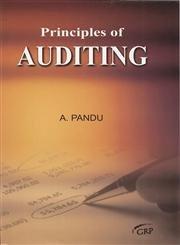Question
Ms. Tatiana Collins, CFO for Boadi Coffee (BC), a specialty coffee manufacturer, is rethinking her companys working capital policy in light of a recent scare
Ms. Tatiana Collins, CFO for Boadi Coffee (BC), a specialty coffee manufacturer, is rethinking her companys working capital policy in light of a recent scare she faced when BCs corporate banker, citing a nationwide credit crunch, balked at renewing BCs line of credit. Had the line of credit not been renewed, BC would not have been able to make payroll, potentially forcing the company out of business. Although the line of credit was ultimately renewed, the scare has forced Ms. Collins to examine carefully each component of BCs working capital to make sure it is needed, with the goal of determining whether the line of credit can be eliminated entirely. In addition to (possibly) freeing BC from the need for a line of credit, Ms. Collins is well-aware that reducing working capital can also add value to a company by improving its EVA (Economic Value Added). In her corporate finance course Ms. Collins learned that EVA is calculated by taking net operating profit after taxes (NOPAT) and then subtracting the dollar cost of all the capital the firm uses:
EVA = EBIT(1 T) Capital costs
= EBIT(1 T) WACC(Capital employed).
If EVA is positive then the firms management is creating value. On the other hand, if EVA is negative, then the firm is not covering its cost of capital and stockholders value is being eroded. If BC could generate its current level of sales with fewer assets, it would need less capital. This would, other things held constant, lower capital costs and increase its EVA.
Historically, BC has done little to examine working capital, mainly because of poor communication among business functions. In the past, the production manager resisted Ms. Collinss efforts to question his holdings of raw materials, the marketing manager resisted questions about finished goods, the sales staff resisted questions about credit policy (which affects accounts receivable), and the treasurer did not want to talk about the cash and securities balances. However, with the recent credit scare, this resistance became unacceptable and Ms. Collins has undertaken a company-wide examination of cash, marketable securities, inventory, and accounts receivable levels.
Ms. Collins also knows that decisions about working capital cannot be made in a vacuum. For example, if inventories could be lowered without adversely affecting operations, then less capital would be required, the dollar cost of capital would decline, and EVA would increase. However, lower raw materials inventories might lead to production slowdowns and higher costs, and lower finished goods inventories might lead to stock-outs and loss of sales. So, before inventories are changed, it will be necessary to study operating as well as financial effects. The situation is the same with regard to cash and receivables. Ms. Collins has begun her investigation by collecting the ratios shown below. (The partial cash budget shown after the ratios is used later in this mini case.)

a. (6 pts) Ms. Collins plans to use the preceding ratios as the starting point for discussions with BCs operating team. She wants everyone to think about the pros and cons of changing each type of current asset and how changes would interact to affect profits and EVA. Based on the data, does BC seem to be following a relaxed, moderate, or restricted working capital policy?
b. (6 pts) How can one distinguish between a relaxed but rational working capital policy and a situation in which a firm simply has excessive current assets because it is inefficient? Does BCs working capital policy seem appropriate?
C. (10 pts) Calculate the firms cash conversion cycle given annual sales are $660,000 and cost of goods represent 80% of sales. Assume a 365-day year.
RR INDUSTRY 1.75 0.92 58.76% 16.67 Current Quick TL/Assets Turnover Of Cash And Securities Days Sales Outstanding (365-Day Basis) Inventory Turnov Fixed Assets Turnover Total Assets Turnover Profit Margin On Sales Return On Equity (ROE) Payables Deferral Period 2.25 1.16 50.00% 22.22 32.00 20.00 13.22 3.00 3.50% 21.00% 33.00 45.63 12.00 7.75 2.08 2.07% 10.45% 30.00 er RR INDUSTRY 1.75 0.92 58.76% 16.67 Current Quick TL/Assets Turnover Of Cash And Securities Days Sales Outstanding (365-Day Basis) Inventory Turnov Fixed Assets Turnover Total Assets Turnover Profit Margin On Sales Return On Equity (ROE) Payables Deferral Period 2.25 1.16 50.00% 22.22 32.00 20.00 13.22 3.00 3.50% 21.00% 33.00 45.63 12.00 7.75 2.08 2.07% 10.45% 30.00 erStep by Step Solution
There are 3 Steps involved in it
Step: 1

Get Instant Access to Expert-Tailored Solutions
See step-by-step solutions with expert insights and AI powered tools for academic success
Step: 2

Step: 3

Ace Your Homework with AI
Get the answers you need in no time with our AI-driven, step-by-step assistance
Get Started


